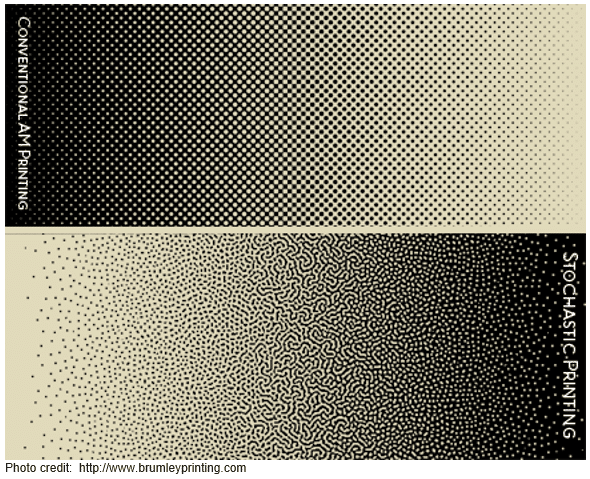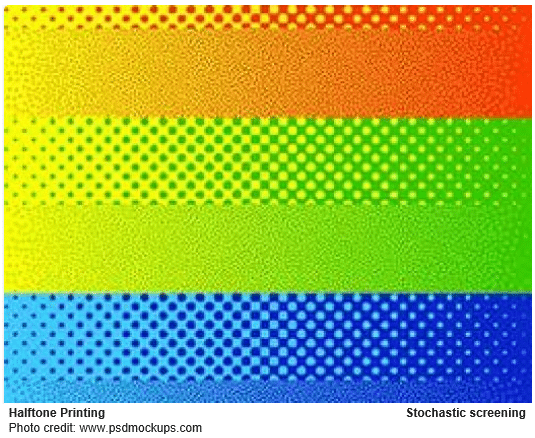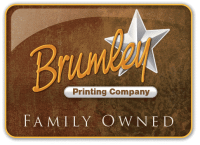What is stochastic screening, and how does it differ from conventional halftone screening? It’s a question commercial printers often hear.
The word “stochastic” means: “Randomly determined; having a random probability distribution or pattern that may be analyzed statistically but may not be predicted precisely.” The process of stochastic screening differs largely from conventional halftone screening, namely in the position and amount of dots in each image. Think “fixed” for conventional halftone screen printing, and think “random” for stochastic screen printing.
Stochastic screening (also frequently referred to as FM (frequency modulated) screening) developed in the 1970s. Stochastic screening is a commercial printing method that produces more lifelike tonal representations, and a broader CYMK color gamut than traditional halftone, or AM (amplitude modulated) screening does not. The Stochastic Screening Method
The Stochastic Screening Method
In the stochastic screening method, the frequency of dots being applied is increased or reduced in relation to the tonality of the image which results in higher quality prints. These dots are also applied in a pseudo-random “weave” pattern which prevents the moiré effect and rosette patterns associated with traditional conventional screening methods.
The random dot sizes used in stochastic screening can be as small as 10 micrometers to produce images that are of comparable quality to photographic prints.
The smaller dot size and random application technique used in stochastic screening also result in better light filtering than is achievable when using the traditional AM screening method. In short, stochastic screening does a better job of preventing the “whiteness” of the printing paper from bleeding through the ink. The result is richer, more vibrant color representations.
In recent years, advancements in the computer-to-plate technology have led to an even higher level of detail, and a wider color palate. Stochastic screening also uses up to 10% less ink than AM screen printing which can have a significant impact on the cost of high-run print jobs. Is Stochastic screening the Right Choice for Your Needs?
Is Stochastic screening the Right Choice for Your Needs?
The answer to this question depends on several factors including your artwork(solids), the specific artwork to be printed (jewelry, livestock or facials), and the intended use of your printed materials. Stochastic screening does a better job of rendering accurate flesh tones and detail in shadow areas so if your artwork includes these elements, stochastic screening may be a better choice than traditional AM screening methods.
When choosing a commercial printer, keep in mind that stochastic screening requires an extremely clean proofing environment, because even microscopic dust particles can leave an impression on the proof.
In the Dallas / Fort Worth area, call Brumley Printing Company at 817-336-5551 to learn if stochastic screening is the right choice for your upcoming printing needs.
